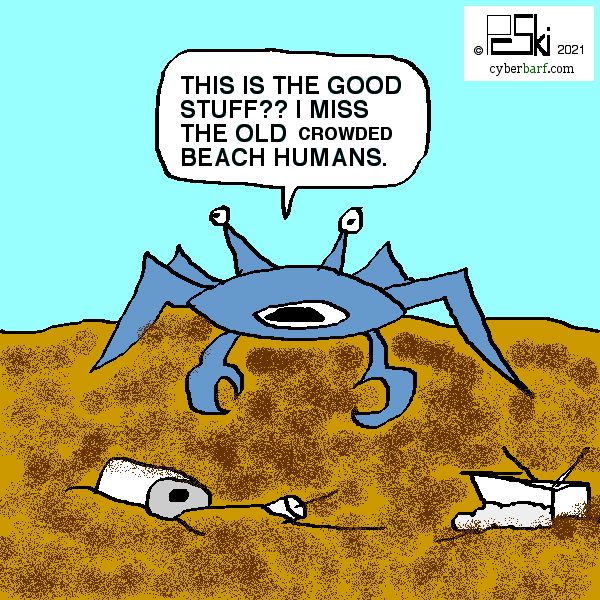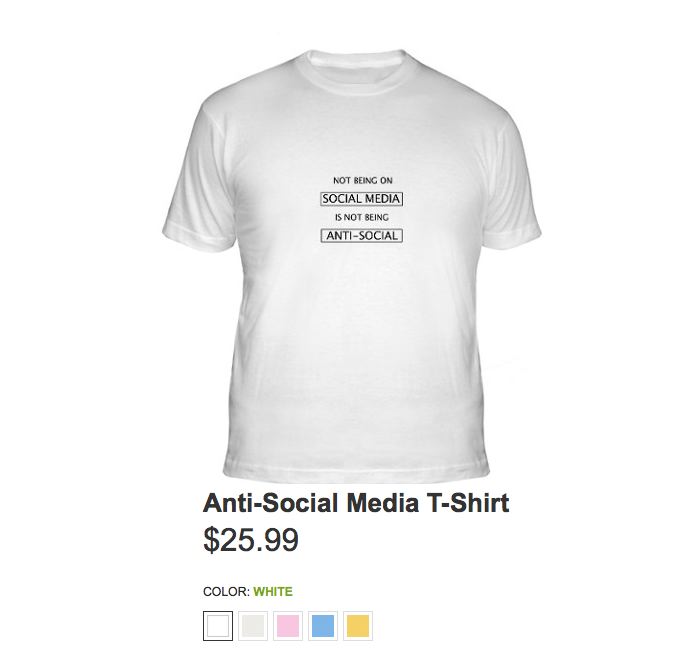|
cyberbarf VOLUME 20 No 1 EXAMINE THE NET WAY OF LIFE AUGUST, 2021
SEC' EM! A LETTER FROM THE PUB iTOONS IRE IN THE STREAMS FOUND BUT NOT LOST ON THE INTERNET WHETHER REPORT
©2021 Ski Words, Cartoons & Illustrations All Rights Reserved Worldwide Distributed by pindermedia.com, inc
cyberculture, commentary, cartoons, essays
|
"Dol"
Remember Me. I am Here. Do Not Forget.
|
|
cyberbarf SEC'EM! COMMENTARY Even a sleeping junk yard dog is dangerous. It can use its stealth hunting skills to sneak up on you and bite you in the blindside. Because, that is what junk yard dogs do. When Texas and Oklahoma, interstate college football rivals, decided to petition to join the Southeast Conference (SEC), it caused an earthquake in college sports. The SEC is on the top of the Power 5 college sports conferences. It has a deep fan base and national television contracts. It has expended from its southern roots to the Midwest. Adding two more nationally known programs would weaken their rival conferences. But no one should be surprised by the SEC bite because it has been barking for consolidation for some time. The NCAA, the umbrella organization for college sports, has been under fire. Student athletes have sued and partially won the right to make money from playing college sports, which is a multi-billion dollar enterprise for the schools. The conflict between student and university and amateur against professionalism has been boiling for years. The original task of the NCAA was simple: organize and hold national tournaments for college sports programs like football, basketball, etc. Simple. Before, it was the colleges and their leagues that crowned champions. And sportswriters would create polls to declare a national champion in college football, the crown jewel of US amateur athletics. Early on, college football was much more popular than processional football. It was only until the NFL founders began to sign top college stars did pro football gain some traction. But in many parts of the US, college football is still king. You can tell because college football is on television four nights a week. The spread of cable television national channels like ESPN has created a distribution of live sports programs to the masses. A kid a Boise State can get the same amount national air time as a Big Ten top prospect. The NCAA expanded its power through rule making authorities which went beyond tournament qualifications to number of scholarships, academic standards, recruiting rules, etc. This explosion of authority was passively consented by University presidents who govern the NCAA board. Under the guise of protecting amateur athletics from corruption, the NCAA created financial fines and program suspensions. It was a system that university presidents found convenient when angry alumni and major donors complained about competitive disadvantages against rival schools. They could refer them to the governing body, the NCAA. The landscape is changing but slowly. The US courts still have precedent in the value of amateur athletics. Even some states cling to the concept because paying student athletes would bankrupt their state treasuries from worker compensation injury claims alone. It comes down to the real question being avoided by the change seekers: what is the value of an athletic scholarship. A college football scholarship is worth between $35,000-$60,000 per year in tuition, fees, room and board. As parents of non-athletes will attest, that is a lot of money. It costs a lot of money to get a four year college degree. Moat students graduate with tens of thousands of dollars in student loan debt. However, a college athlete can graduate with a degree and no debt which is a huge advantage over their peers. But critics claim schools are making millions off the labor of the student athlete, who is not covered by any labor laws (they are like other students, who are on their parents' own health insurance plans in case of injury). If the schools are making so much money, why not share it with the athletes? But where will that money come from? Most schools claim that football and basketball are the only revenue positive sports which pays for the other 20 plus non-revenue sports (including those scholarship athletes). If you have to pay revenue generating athletes, you have to pay all your student athletes. No school can afford to add thousands of new employees to the payroll. What comes of the scholarship athlete? Scholarships would be eliminated in favor of professional contracts. Non-revenue sports programs would be cut. Non-athletes would have to pay for their own school costs. The overall campus experience would be greatly diminished. Schools would be professional sports team(s) that run educational programs on the side. People have been saying student athlete has been a joke for decades since those players have no intention to get a college degree. Especially in basketball, top players play one college year and got pro. One and done. The colleges are basically free minor league system for the NBA and NFL. Why not have the pro sports leagues pay for college athletics? There is no compelling financial and competitive advantage to do so. Billionaire sports owners loath the concept of sharing the wealth. Pro teams only draft and sign less than 250 amateur players a year (with less making the final rosters). College football has 256 teams or more than 23,000 football players. The NFL has no reason to subsidize 99 percent of the athletes who will not play pro ball. Other college conferences are in pause mode. Re-alignment is a financial version of musical chairs with active chain saws. Somebody is going to get hurt. It is a matter of greed. How much greed will one go to before it collapses the entire system. But is not the conferences that are at risk. The NCAA may lose from its membership the SEC and other conferences who will got establish their own governing body and rules (which could include forms of direct compensation other than a player's personal image and endorsement rights).The collapse of the NCAA would turn college athletics into the wild, wild west of sports. There were always pay-offs and money to athletes and parents to sign letters of intent. Now, with no rules, what bad behavior will be tolerated? None? The alumni and faculty of colleges need to decide their institution is academic or a sports business. If it is the former, than sports programs can be cut to focus on academic scholarships and real world internships in business, medicine and engineering fields. If it is latter, than then athletic department rules the campus to the detriment of funding academic programs. Some would say that this imbalance already exists at the major power schools. But clearly it would get worse if the income and funding is dependent on athletic performance and victories. The SEC expansion plan is probably the first nail in the NCAA coffin. And as a long term result, the NCAA national rules will fade way into conference feudal bands of like minded college presidents embracing a peudo-professional windfall from their athletic programs. Whether the student athlete will face extinction depends on whether schools, parents and students still value a college degree through scholarship programs.
cyberbarf A LETTER FROM THE PUB OPINION Dear Valued Readers, Thank you. Thank you for participating in this very long journey. This month marks the 20th anniversary of the first cyberbarf issue. Our late tech guru, Rocky, badgered me to move my nonsensical zines to the world wide web. I think he was tired of waiting for the snail mail to arrive with photocopied newsletter of satire, humor and cartoons. To heed his advice, naturally, I went overboard. I signed up for three web domains. The first one was to be dedicated to commentary on the growing cyberculture, hence cyberbarf was born. Ironically, it was the first to launch eventhough THE REAL NEWS had been in publication since 1980. A third site began its life as a low budget personal homage to Apple's e-world. But in very little time, managing and creating content for three sites was daunting when one had a REAL daily job. But we soldier on. Words and images. Cartoons and commentary. It has been a consistent ride. I know this page is only a drop of water in an ocean of content. There has been a loyal base of 3,000 readers who visit this site. This is what George Plimpton would have called “ a fine literary niche publication.” It is not the size of the audience but the ability to have a creative outlet of tempered expression. Too many people have abandoned newspapers, nightly newscasts and radio programs for the brain numbing speed of finger swiping Twitter, Instagram or the current hot take SNS platform. There is clearly more information available to everyone. But it is also clear that information comprehension continues to decline. People want to be entertained in seconds not for an hour (the old over-the-air TV standard for a drama or variety show.). Even a half hour sit-com seems to be gathering dust when you can watch someone get their balls crushed in a 15 second TicToc video. Oh, fun times indeed. But the explosion of internet access and public contributions to it has given the average person the ability to digitally travel to any corner of the Earth. One can experience other cultures in words, pictures and videos. Despite that connectivity, our nations are no closer to lasting global peace. As the Olympics is an antiquated reminder of an event that is supposed to bring different world citizens together, it is now a potential poster child for a superspreader disaster. I have not looked back to far into the archives. I think it keeps a good record of my digital thoughts and opinions. I think I have kept to the original mission statement to EXAMINE THE NET WAY OF LIFE. But 20 years is a long time in the digital world - - - a dozen generations of the smartphone, for example. I may go back to bring back some old items to keep the site fresh. I hope the writing has gotten crisper, the artwork more interesting, and the message of the site clearer. I hope the new features given you some enjoyment and maybe time to pause and think about other things. Recently, I decided to make illustrations for a condensed version of a Korean inspired version of a haiku. It is a small challenge but we need diversions to filter out the madness. (Think, daily crosswords.) Any little oasis in one's daily grind is a blessing. One of my friends who moved out of state, then was crushed by the pandemic wrote earlier this year that my cartoons helped him through these troubled times. I was grateful for the support. As always, I will continue to try to do my best. Very truly yours, Ski
|
|
iToons
cyberbarf IRE IN THE STREAMS CONSUMERISM The people finally got what they wanted and they are not happy about it. The law of unintended consequences is taken too lightly. The cord cutters rejoiced that they could program their own lives with channels that they wanted to watch. A cable operator's 100 channel package usually contained 60 or 70 channels with limited or no interest to the household. What got people upset were the increasing sports channel fees that non-viewers objected the most to; why pay extra for something I do not want? The a la carte channel movement went to the FCC but it did not act since First Amendment issues preclude government actors from forcing content and speech on citizens. But a $100 per month cable bill made mad consumers into their own TV regulators. The promise of a cheaper TV signal re-distribution package and a high speed Internet connection created the illusion of freedom of choice. Cable operators saw this coming but held the trump cards: they are still the last 100 yards to everyone's doorstep. Trading an cable router for an Internet modem was an easy exchange for cable companies who were tired of complaints and increasing channel fees from major studios and sports leagues. Consumers thought trading their cable bill for an ISP charge (about half the price) seemed like a good idea. But then even cable subscribers noticed the change. Disney, NBC, and other content owners decided to create their own streaming platforms to compete with upstarts like Netflix. The programs that used to be staples on cable suddenly were gone - - - and if you wanted to see those shows you had to pay for a new streaming channel like Disney +. People started to learn quickly that adding one or two streamers and movie channels the monthly TV bill is back or more than the old cable bill. Both legacy cable customers and new ISP self-programmers are up in arms. Cable users have been channel cut to the bone. There are very few new shows. It is basically the landscape of UHF television reruns from the 1970s. Internet users have found themselves competing for enough bandwidth to watch multiple shows on several devices. The streams are encouraging binge watching short season series (around 8 episodes) in order to try to capture and retain subscribers. Subscribers, the monthly corporate annuity, are still the foundation of any TV business model. August 1, 2021 marked the 40th anniversary of the launch of MTV. The premise, music television, was brand new. The executives who were charged with the channel had no concept of how it would work. With no money and blind luck, it got MTV launched as a semi-counter culture hangout place. But in the early years, it was foundering. It was not making any money because MTV was not carried on cable systems which were at the time small, rural regional companies because normal over-the-air signals were terrible. Suburban kids were still listening to the radio and chilling at the local DQ. MTV turned the corner when it pushed the limits of American marketing. It had to sell itself as being cool to the most vocal consumer demographic: tweens and teenagers. As soon as a child can speak, it demands things. Parents are instinctively compelled to take care of their children's demands. MTV had the brilliant house ad campaign: “I Want my MTV!” It turned into a cultural battle cry. Kids nagged their parents until they got cable and nagged the cable operators to carry MTV. Since MTV had no money, it used free music videos, mostly from UK and Europe, to fill 24 hours a day. If you made a video, it could get aired. Some labels thought this would be a great marketing tool for their acts - - - they could sell more records. But American labels were strongly against it. They demanded broadcast licensing fees from MTV. Or having the network pay for producing videos. Since MTV was broke, it said no. It was the turning point. MTV started to get carried nation wide. It became an iconic brand. Companies and artists began to fight to get their videos played in a daily rotation. Madonna used a virgin slut persona to create a superstar brand. Kids were suddenly wearing Eurotrash purple mohawks and chain mail to school. But MTV was a short lived product. It had cracks from the very beginning. Executives would continue to state that they were merely programming a rock and roll station on television. Critics complained about lack of diversity or standards for inclusion. There is a famous uncomfortable David Bowie interview where he took MTV to task for not showcasing diverse acts, including rap, hip hop and R&B. The only urban act being shown was Run DMC, only because the founders liked to include rock guitar riffs in their songs. Near the video peak, it did put a hip hop show on at 1 a.m. - - - and it suddenly became the highest rated show on the network. It seemed the suburban kid audience wanted more rebellious, in-your-face, gritty experiences. MTV got popular enough that its parent company sold it to a traditional media company. The new corporate overlords decided that the music video concept had run its course (the label demands were increasing for licensing fees and compensation). The new broadcasters quickly pivoted to include game shows and animation as a sudden transition to MTV's lasting legacy: reality televisions shows. MTV, like a stereotypical rock star story, had its spectacular rise to fame, fireworks then burn out only after seven (7) years of existence. Streamers, including Netflix, are having a hard time getting and maintaining subscribers, who now are more apt to complain about limited program choices than the coolness factor of staying home and chillin' on a Saturday night. For the past year and a half, people were trapped in their homes so screens and apps were their only chance to got outside (virtually). But it is harder to find new, compelling content when most Hollywood studios were shut down. Netflix went overseas to acquire and co-produce Korean dramas which found this style of storytelling more interesting that normal Hallmark formula series. But even those numbers have fallen, with Netflix admitting that it has lost millions of subscribers from its pandemic peak. Consumers are getting more fickle about their entertainment consumption. Disney loves to have a family pay $30 to get an opening weekend blockbuster film in their living room. It saves Disney on distribution and theater gross revenue sharing fees. Disney also likes the idea of charging a household $10 per month for its show library which is 3 to 5 times more than it would have gotten from a cable operator. The profit margins seem to pull studios towards a vertical streaming monopoly of their content. But when Netflix purges its offerings (when license deals end), customers now tend to re-examine and re-cut the cord for that service until something new, interesting or critically acclaimed shows up on the radar. It seems like the perfect storm of capitalism and market democracy. But they are still stuck with very few ISP options and service issues with the old cable giants. Life is not perfect. TV continues to be the most imperfect distribution system.
cyberbarf FOUND BUT NOT LOST ON THE INTERNET
We get it. Fashion is supposed to be out there. And high fashion is way, way out there. But the double waist shirt seems to be one of those drunken ideas gone very bad. There is a shock factor. But the creator allegedly said the concept gives the wearer extra pockets. Huh? The bottom pocket contents would fall to the ground. Besides losing your valuables, it seems very difficult to walk in. Source: neatorama
There is a new art trend of putting large animals on buildings. But outside Shinjuku Station in Japan, this art piece is actually a 4D LED projection. The cat moves and growls. It looks so real we wonder if the public freaks out when startled by it. What's next? A giant fire breathing lizard destroying Tokyo? Source: neatorama |
|
AN
ANNIVERSARY IS A TIME TO REJOICE AND GIVE THANKS TO SOMEONE SPECIAL.
|
|
LADIES PJS ON SALE NOW! |
FREELANCE CARTOONS, ILLUSTRATIONS FOR NEWSPAPERS, MAGAZINE, ON-LINE DO YOU CONTENT? CHECK OUT
|
|
|
 |
 |
|
cyberbarf THE WHETHER REPORT |
cyberbarf STATUS |
|
Question: Whether the changing COVID restriction rules will continue to confuse the public and prolong the pandemic? |
* Educated Guess * Possible * Probable * Beyond a Reasonable Doubt * Doubtful * Vapor Dream |
|
Question: Whether a year of travel restriction anger calm down by the end of the year? |
* Educated Guess * Possible * Probable * Beyond a Reasonable Doubt * Doubtful * Vapor Dream |
|
Question: Whether console video games have started its slow decline in popularity? |
* Educated Guess * Possible * Probable * Beyond a Reasonable Doubt * Doubtful * Vapor Dream |
|
OUR STORE IS GOING THROUGH A RENOVATION AND UPGRADE. IT MAY BE DOWN. SORRY FOR INCONVENIENCE.
LADIES' JAMS MULTIPLE STYLES-COLORS $31.99 PRICES TO SUBJECT TO CHANGE PLEASE REVIEW E-STORE SITE FOR CURRENT SALES
|
PRICES SUBJECT TO CHANGE; PLEASE CHECK STORE THANK YOU FOR YOUR SUPPORT!
NEW REAL NEWS KOMIX! SHOW HACK! |
 |
cyberbarf
Distribution ©2001-2021 SKI/pindermedia.com, inc.
All Ski graphics, designs, cartoons and images copyrighted.
All Rights Reserved Worldwide.









